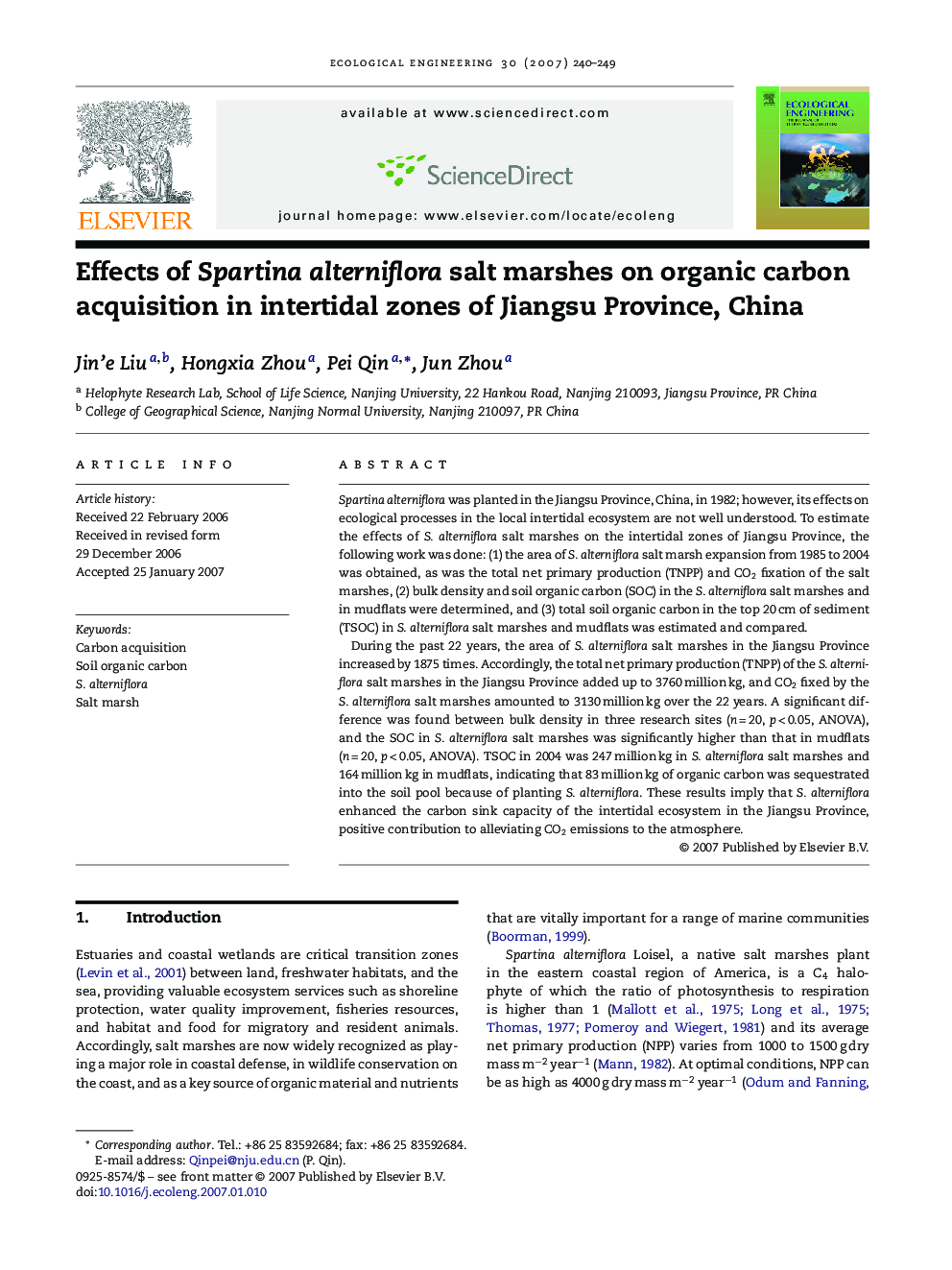| Article ID | Journal | Published Year | Pages | File Type |
|---|---|---|---|---|
| 4391094 | Ecological Engineering | 2007 | 10 Pages |
Spartina alterniflora was planted in the Jiangsu Province, China, in 1982; however, its effects on ecological processes in the local intertidal ecosystem are not well understood. To estimate the effects of S. alterniflora salt marshes on the intertidal zones of Jiangsu Province, the following work was done: (1) the area of S. alterniflora salt marsh expansion from 1985 to 2004 was obtained, as was the total net primary production (TNPP) and CO2 fixation of the salt marshes, (2) bulk density and soil organic carbon (SOC) in the S. alterniflora salt marshes and in mudflats were determined, and (3) total soil organic carbon in the top 20 cm of sediment (TSOC) in S. alterniflora salt marshes and mudflats was estimated and compared.During the past 22 years, the area of S. alterniflora salt marshes in the Jiangsu Province increased by 1875 times. Accordingly, the total net primary production (TNPP) of the S. alterniflora salt marshes in the Jiangsu Province added up to 3760 million kg, and CO2 fixed by the S. alterniflora salt marshes amounted to 3130 million kg over the 22 years. A significant difference was found between bulk density in three research sites (n = 20, p < 0.05, ANOVA), and the SOC in S. alterniflora salt marshes was significantly higher than that in mudflats (n = 20, p < 0.05, ANOVA). TSOC in 2004 was 247 million kg in S. alterniflora salt marshes and 164 million kg in mudflats, indicating that 83 million kg of organic carbon was sequestrated into the soil pool because of planting S. alterniflora. These results imply that S. alterniflora enhanced the carbon sink capacity of the intertidal ecosystem in the Jiangsu Province, positive contribution to alleviating CO2 emissions to the atmosphere.
